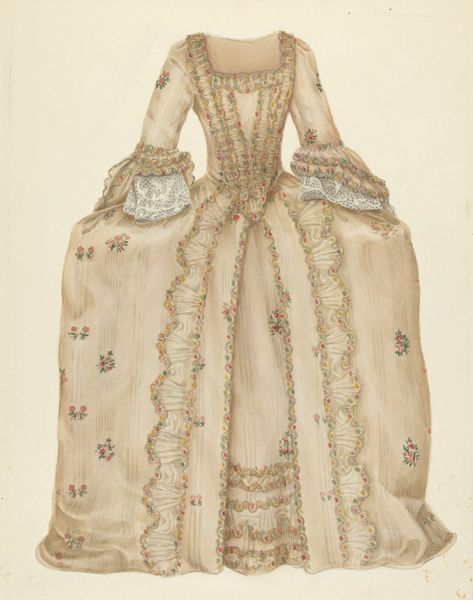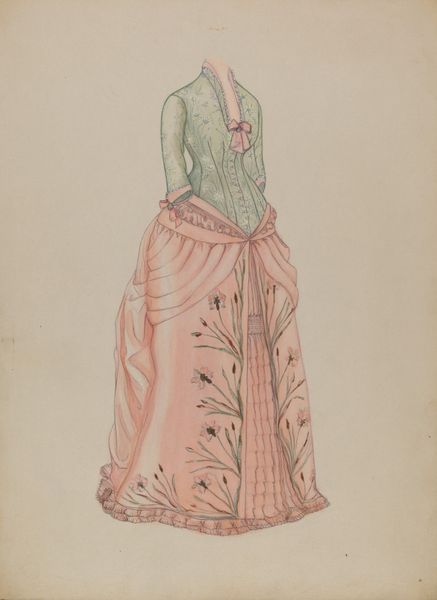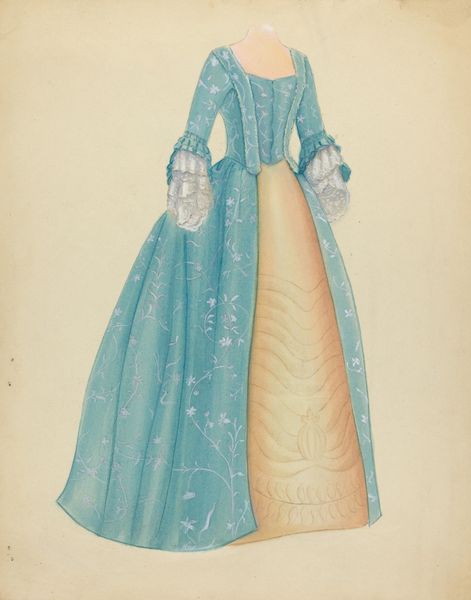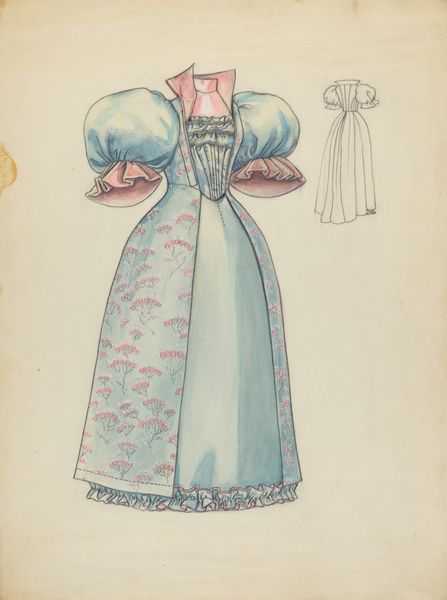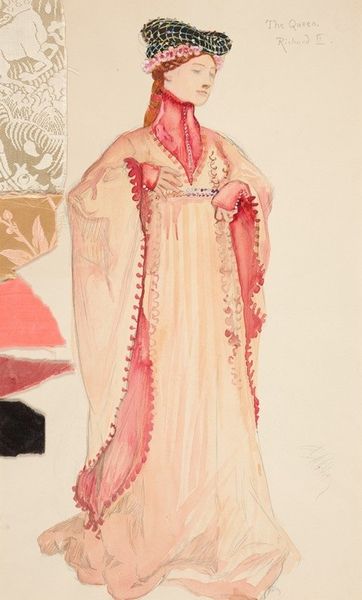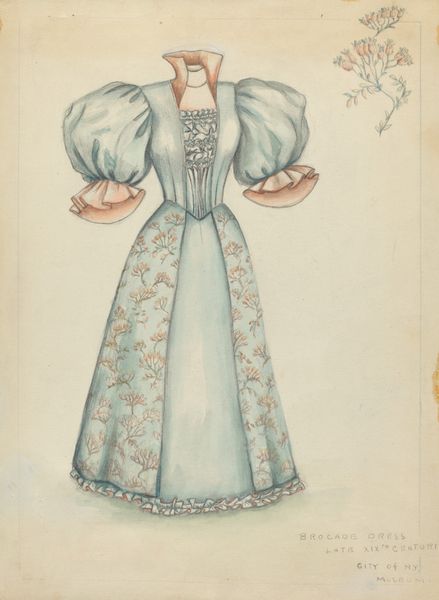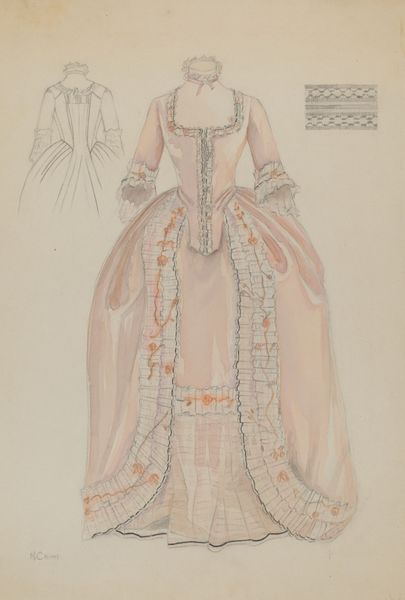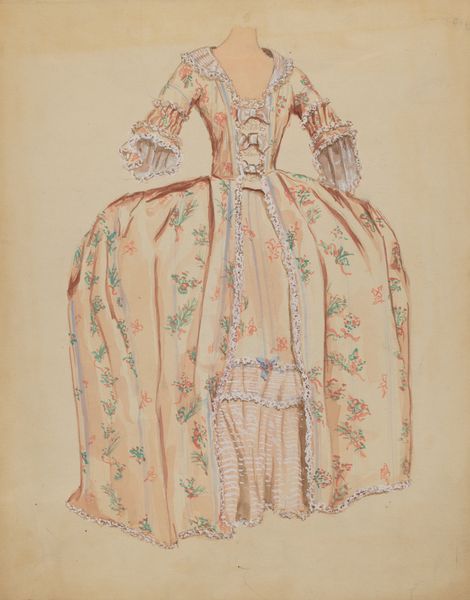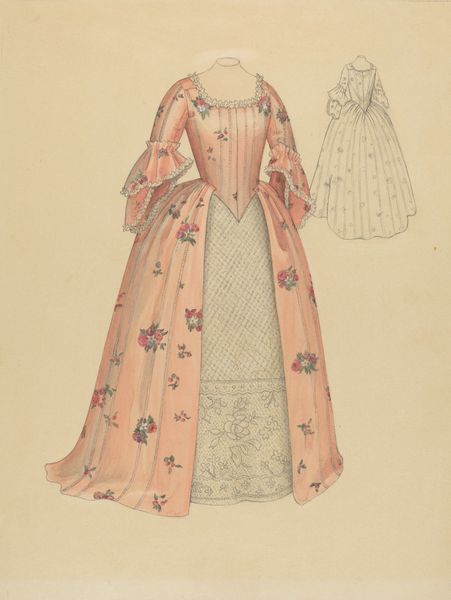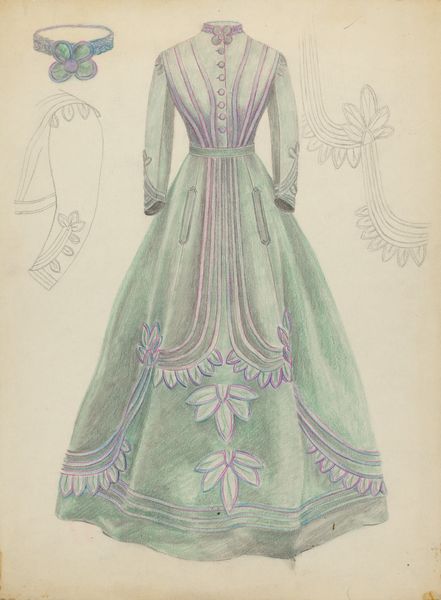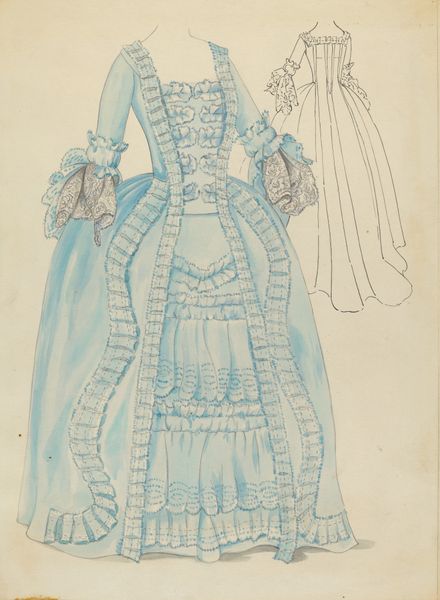
drawing, coloured-pencil, watercolor
#
portrait
#
drawing
#
coloured-pencil
#
watercolor
#
coloured pencil
#
watercolour illustration
#
genre-painting
#
decorative-art
#
watercolor
Dimensions: overall: 29.3 x 22.7 cm (11 9/16 x 8 15/16 in.)
Copyright: National Gallery of Art: CC0 1.0
Curator: Charles Criswell’s rendering, “Dress,” made between 1935 and 1942, presents us with an elegant garment brought to life through colored pencil and watercolor. Editor: Well, the first thing that strikes me is its undeniable prettiness. The soft, rosy hues and delicate floral accents give it an undeniably feminine and almost ethereal quality. Curator: Precisely. Consider the means of its production: these modest materials employed during a period marked by economic hardship. This choice speaks volumes about resourcefulness and perhaps a longing for beauty amid social challenges. It’s tempting to imagine it was designed during the Depression or perhaps right before the War. Editor: True, the deliberate application of watercolor adds a layer of translucence and depth. The strategic arrangement of lines draws your eye up and down the design, creating a sense of height and elongated form. I notice too that this piece, seemingly about beauty, appears uninhabited. Curator: This raises a vital point – an object emptied of its occupant. Criswell created designs often absent of a body, but this choice emphasizes how clothing operates in a system of consumption. These drawings become documents about access, aspiration, labor and identity. Editor: I’m compelled by the level of intricate detail and technical prowess that brings depth and shadow to the image; the lace underlay against the smooth, satin-like overdress provides wonderful tension. It's a study in contrasts and symmetries that pulls the work into a balanced harmony. Curator: Consider this in the context of the decorative arts, and Criswell’s possible employment within design-oriented labor sectors. His hand in constructing beauty as a working artist is an important lens. How might ideas of industrial design principles inform this seemingly straightforward dress study? Editor: In the end, whether seen through the lens of production or its intrinsic visual qualities, "Dress" becomes more than just a simple drawing. It evokes nostalgia and inspires reflection on how material can reflect beauty in multiple directions. Curator: Yes, a testament to the ways in which material realities inform the creation and understanding of visual delight. A garment representing far more than utility or charm.
Comments
No comments
Be the first to comment and join the conversation on the ultimate creative platform.
